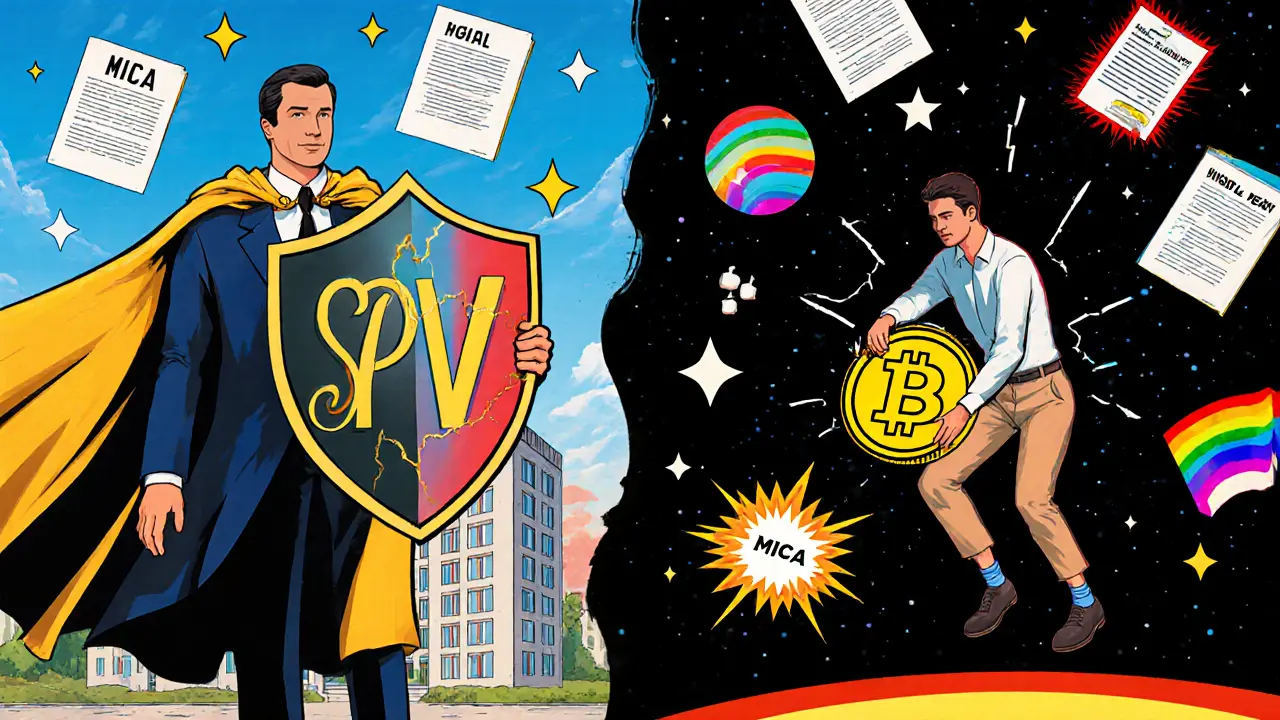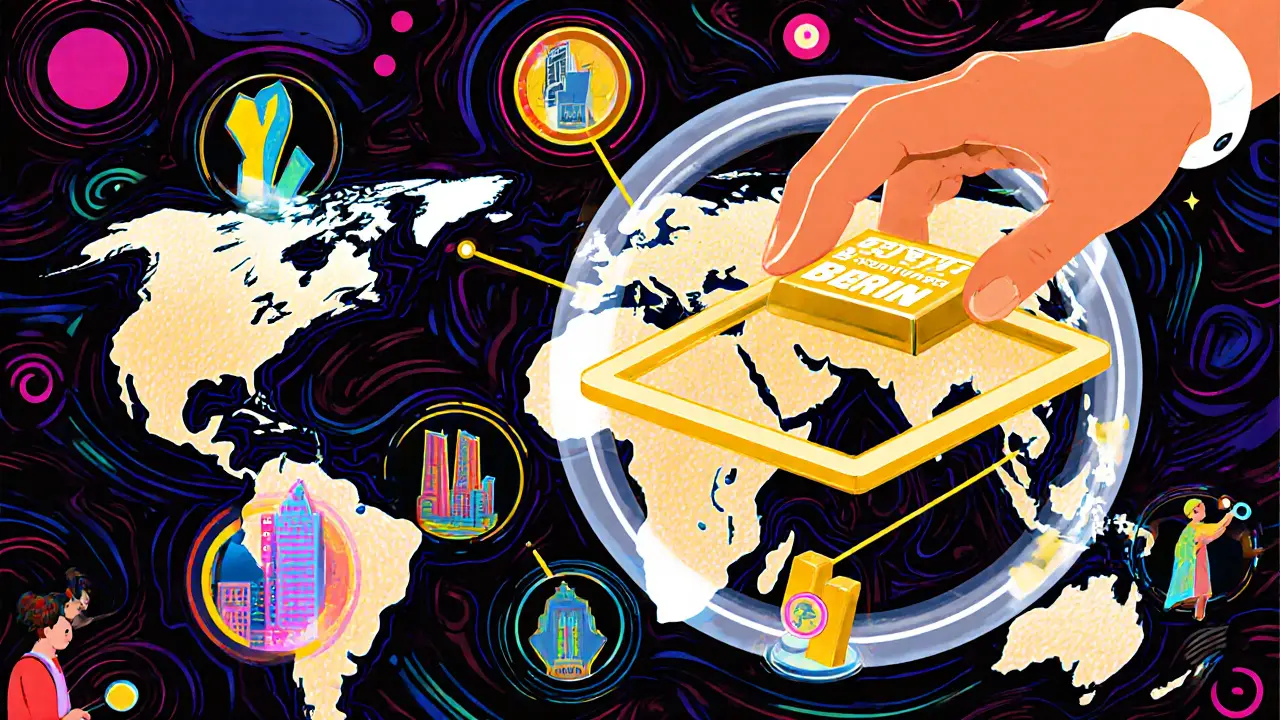RWA Token Regulatory Compliance Checker
Check Your RWA Project Compliance
Compliance Assessment
When you buy a share of a building in New York or a fraction of a Picasso painting, you don’t expect to hold a digital file on your phone and call it ownership. But that’s exactly what’s happening with RWA tokenization. Real-world asset (RWA) tokens represent legal rights to physical or financial assets-like real estate, fine art, or gold bars-on a blockchain. The big question isn’t whether the tech works. It’s whether the law recognizes it as real ownership.
What Exactly Is an RWA Token?
An RWA token isn’t just a digital badge. It’s a claim. A claim to income, to title, to physical possession. Think of it like a deed, but encoded in a smart contract. A token might give you 0.5% ownership of a commercial building in Berlin, entitling you to 0.5% of the rent. Or it could represent a share of future royalties from a music catalog. The asset exists in the real world. The token is its digital proxy.But here’s the catch: the blockchain doesn’t automatically make you the legal owner. The law does. And different countries treat these tokens very differently.
The Two Main Legal Structures: SPV vs. Direct Ownership
There are two ways to legally structure RWA tokens-and one way is far more common for a reason.Tokenized Special Purpose Vehicle (SPV) is the industry standard. Here’s how it works: a legal entity, usually a limited company or trust, owns the actual asset. That entity then issues tokens that represent ownership shares in the company-not the asset itself. So if you hold a token, you own a share of the SPV, and the SPV owns the building, the artwork, or the bond. This structure works because it fits neatly into existing securities laws. Regulators understand companies and shares. They don’t yet fully understand blockchain-based title records.
Direct Asset Tokenization sounds simpler: the token directly represents ownership of the asset. No middleman. But it’s rare. Why? Because land registries, copyright offices, and securities depositories don’t recognize blockchain entries as legal title. If the platform behind the token collapses, you’re left with a digital file and no legal recourse. Courts have ruled in several cases that without statutory recognition, token holders are treated as unsecured creditors-not owners.
That’s why 90% of successful RWA projects use the SPV model. It’s not the most elegant solution. But it’s the only one that’s held up in court.
How Different Regions Handle RWA Tokens
There’s no global rulebook. Instead, there’s a patchwork of legal systems.European Union: MiCA Changes Everything
Since June 2023, the EU’s Markets in Crypto-Assets (MiCA) regulation has been the clearest legal framework in the world for RWA tokens. MiCA doesn’t treat all tokens the same. If your token gives you a share of profits, voting rights, or repayment obligations, it’s classified as a security token and must follow strict disclosure and licensing rules. If it’s just a utility token tied to a commodity like gold, it falls under a lighter category. Crucially, MiCA requires issuers to comply with the Transfer of Funds Regulation-meaning every transaction must carry the sender’s and receiver’s identity. No anonymous transfers. No loopholes.
United States: The Howey Test Rules
In the U.S., there’s no single law for RWA tokens. Instead, the SEC uses the Howey Test to decide if a token is a security. If investors put money into a project expecting profits from the efforts of others, it’s a security. That means registration, or a legal exemption like Regulation D, A+, or S. Most RWA projects in the U.S. use Regulation D, which limits sales to accredited investors only. Between January 2023 and March 2024, the SEC filed 12 enforcement actions against RWA token projects that skipped this step. The message is clear: don’t assume blockchain makes you exempt from securities law.
Switzerland, Singapore, UAE: The Regulatory Hubs
These jurisdictions have carved out niche advantages. Switzerland treats tokenized assets under its financial market infrastructure laws, allowing SPVs to operate with clear licensing. Singapore allows tokenized real estate under its Securities and Futures Act, provided the SPV is licensed and KYC is enforced. The UAE’s Virtual Assets Regulatory Authority (VARA) has created a sandbox for RWA projects, offering fast-track approvals for compliant issuers. These places aren’t just welcoming-they’re competing to become the global hub for tokenized assets.

What Legal Work Is Actually Required?
Building an RWA token project isn’t coding a smart contract and launching. It’s a legal marathon.First, you need a legal opinion. Not a blog post. A formal document from a law firm, signed and dated, stating whether your token is a security, what exemptions apply, and which jurisdictions you can legally sell to. This costs between $50,000 and $250,000 depending on complexity.
Then you form the SPV. That means drafting articles of incorporation, setting up a board, appointing a trustee, and defining how dividends or distributions work. You need custody agreements with licensed vaults or depositories. You need investor agreements that spell out voting rights, transfer restrictions, and what happens if the SPV goes bankrupt.
All of this takes 200 to 400 hours of legal work. And it’s not optional. A 2024 KPMG survey found that 78% of successful RWA projects spent 25-35% of their total development budget on legal structuring. The ones that didn’t? They’re gone.
Real-World Examples: Success and Failure
In 2023, InvestaX tokenized a luxury apartment complex in Singapore using an SPV structure. The property was held in a Singapore-registered company. Tokens represented shares in that company. Investors received rent distributions automatically via smart contracts. Regulators approved it. International investors bought in. Why? Because the legal structure was airtight.
Contrast that with a 2024 art tokenization project in California. The platform claimed tokens represented direct ownership of a Warhol print. No SPV. No legal documentation. When the company went bankrupt, token holders had no claim to the artwork. The court ruled they were unsecured creditors. The art was sold to pay off debts. The tokens? Worthless.
The difference? One had lawyers. The other had developers.

Why This Matters for Investors
If you’re buying an RWA token, you’re not just investing in an asset. You’re investing in a legal structure.Ask these questions before you invest:
- Is the asset held in a registered SPV or trust?
- Can I see the legal opinion confirming the token’s status?
- Is the issuer complying with KYC and AML rules?
- What happens to my rights if the platform shuts down?
- Which jurisdiction’s laws govern the token?
Without answers to these, you’re not owning an asset. You’re trusting a website.
The Future: What’s Coming in 2025 and Beyond
The EU’s Digital Operational Resilience Act (DORA), effective January 2025, will require RWA platforms to meet strict cybersecurity and third-party risk standards. That’s good news. It means only serious players will survive.
The International Swaps and Derivatives Association (ISDA) is finalizing standardized legal documentation for RWA tokens, expected for public review in late 2024. This could cut legal costs by 40% and make cross-border tokenization far easier.
By 2025, 40% of commercial real estate deals in major European cities are expected to involve some form of tokenization. The global RWA market, valued at $2.95 billion in 2023, is projected to hit $23.92 billion by 2030. That growth won’t happen because of blockchain magic. It’ll happen because the law finally caught up.
The bottom line: RWA tokenization isn’t about replacing paper deeds with digital ones. It’s about building a new layer of legal infrastructure on top of the old one. The tech is ready. The law is catching up. But if you skip the legal part, you’re not innovating-you’re gambling.

Write a comment